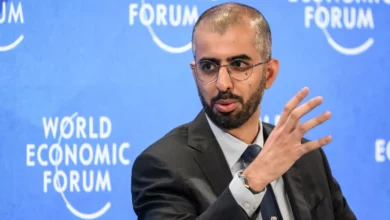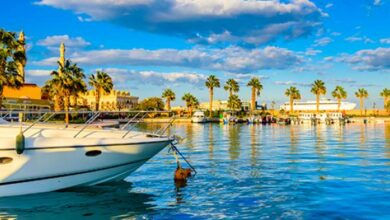In 2009, Abu Dhabi was chosen to host the headquarters of the International Renewable Energy Agency (IRENA). It is to be located in Masdar City, which aims to be the first city in the world to run entirely on solar and other types of renewable energy, to achieve a sustainable zero-carbon and zero-waste ecology. The project strives to be completed by 2013.
The aim is to build a city of approximately 40,000 inhabitants, where 80 percent of water would be recycled, waste production would be reduced by 75 percent, 1 million tons of carbon saved annually, and 70 percent of energy demand reduced. The estimated cost for the project is a staggering US$22 billion.
This is one of several projects — such as the Saadiyat Island project — underway in Abu Dhabi as it endeavours to become the new prototype of a green city for the 21st century.
A recent study by Middle Eastern website Bayt.com named Abu Dhabi the best city in the Middle East and North Africa for 2010, beating a group of ten cities that included Muscat, Dubai, Manama, Tunis, Sharjah, Doha, Kuwait City, Marrakech and Amman.
The question arises whether this model of a city — with its adoption of an environmentally-friendly image — is indeed either replicable or truly environmental, especially considering last year's World Wide Fund for Nature (WWF) Living Planet report, which states, "If everyone in the world lived like an average resident of the United States or the United Arab Emirates, then a bio-capacity equivalent to more than 4.5 Earths would be required to keep up with humanity's consumption and CO2 emissions."
A relatively short time ago, the emirate of Abu Dhabi (meaning ‘Father of the Gazelle’ in Arabic) was little more than an empty, albeit beautiful, desert inhabited by nomadic tribes. Only a sprinkling of villages was to be found around the more fertile oasis areas. The economy was based around pearl diving, fishing and date palm cultivation. That simple island settlement has been transformed into the modern cosmopolitan city of Abu Dhabi and the high-rise capital of the United Arab Emirates (UAE). The discovery of oil in 1958 triggered radical changes for the emirate and its population.
Many environmentalists question whether a model similar to that followed by Abu Dhabi today can create a balanced relationship with nature. Although there are environmental targets in place for such models, many other aspects make it difficult for these to be labelled sustainable in the long-term. According to Yahia Shawkat, a heritage planner and architect, “One of the more relevant concepts of sustainability is ‘use what you already have.’ Many would argue that Abu Dhabi would be more sustainable overall if these investments went into modifying the existing urban stock.”
Others would go further by questioning the very idea of urban planning — even if tailored to be environmentally sustainable.
The utopian top-down approach to urban planning has been critiqued and overhauled while the concept itself has been abandoned — in the West — since the 70s and 80s. Manar Moursi, a freelance architect and urban consultant, said, “Nowadays, we no longer have ‘schools of planning’ at universities but rather teach urbanism under the umbrella of architecture — studios are always set in urban contexts and the idea is that the architecture can address a specific context more surgically, rather than imposing a larger vision for an entire city with no participation. The idea of a large master plan for any city has become an obsolete way of thinking forward.”
Master plans for many cities around the world have been plagued by the emergence of gated-communities and arguably Masdar City is a continuation of that model — albeit with a environmental face-lift. Somehow the view is that to achieve a truly harmonious community, a disconnection from its surroundings must also be achieved. But in reality true environmental sustainability must be intrinsically tied to its surroundings.
This idea corresponds with environmentalists' belief that we need to live with nature and not at its expense.
If Abu-Dhabi — and other cities following the same path — strive to become environmental cities (in the truest sense) by being sustainable and totally free of fossil fuels (as Masdar strives to be), then many would argue that the right decision would be to avoid such projects in their entirety and instead spend the money on converting the existing economy and infrastructure onto a renewable footing.
In the words of Moursi, “Planning new ‘cities’ from scratch, instead of finding strategies to densify and reuse our existing built space, is a complete waste of energy and resources. Further, these new ‘utopias,’ such as Masdar — which employ expensive technology — will, instead of bridging the existing divide, serve only to further segregate the city's ‘haves’ and ‘have-nots.’”
This also applies to mega-cities such as Cairo. In recent times, we have seen the excessive sprawling of satellite compounds — all gated communities — which represent the spread of suburbanization, or horizontal planning.
Taking this point of view, it would seem that Masdar City, along with all projects following the same logic, reinforces the need to re-assess projected urban-growth scenarios, particularly when they are proving to have serious environmental shortcomings.




